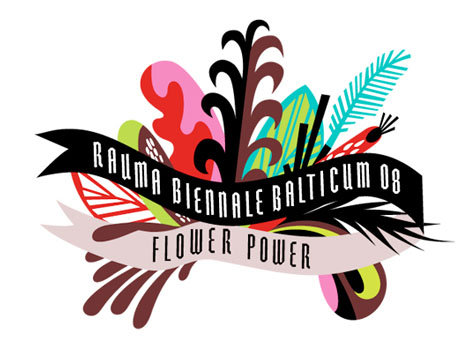Rauma Biennale Balticum 2008
dal 13/6/2008 al 20/9/2008
Segnalato da
Teija-Tuulia Ahola
Maija Albrecht
Lise Blomberg Andersen
Dogan Dogan
Hadassah Emmerich
Alya Esipovich
Unni Gjertsen
Tue Greenfort
Teuri Haarla
Kalle Hamm & Dzamil Kamanger
Minna Hint
Ieva Iltnere
Auste Jurgelionyte
Matti Kallioinen
Boris Kazakov
Jukka Lehtinen & Marko Suomi
Agnes Meyer-Brandis
Malgorzata Markiewicz
Lutz Mommartz
Bjorn O.Olsson
Satu-Minna Suorajarvi
Aija Zarina
Jasper Zoova
13/6/2008
Rauma Biennale Balticum 2008
Rauma Art Museum, Rauma
The theme of the this edition of the show is based on the sixties slogan "flower power". More than looking back at the hippie era the organisers are interested in the different paths that the revolutionary thoughts of those days have been taking and what are the possible present day and future consequences of connecting flower and power. Flower power can be seen as a symbol of creative energy generating political, social and cultural processes, often through grassroot movements.

The theme of the year 2008 Rauma Biennale Balticum is based on the sixties slogan "flower power". More than looking back at the hippie era we are interested in the different paths that the revolutionary thoughts of those days have been taking and what are the possible present day and future consequences of connecting flower and power. Flower power can be seen as a symbol of creative energy generating political, social and cultural processes, often through grassroot movements. The theme is also about the life force and life supporting function of the vegetal world, flowers, plants and trees and the human dependence on nature and peaceful co-existence with the whole biosphere, not forgetting the rich aesthetic and symbolic dimensions of plants.
In the exhibition visions of flower power are realized in a variety of artistic media, painting, photography, video, experimental films, printmaking, animation, sculpture, installation, environmental and site-specific works, performances etc. There are artworks about utopian ways of living, plantlife real and imaginary, altered states of consciousness and decorative characteristics of flowers. Outside the museum immigrant plants are blooming and battery hens liberated from their cages live their lucky days of retirement free of trouble and worry.
Artists: Teija-Tuulia Ahola (Finland), Maija Albrecht (Finland), Lise Blomberg Andersen (Denmark), Dogan Dogan (Germany), Hadassah Emmerich (Germany), Alya Esipovich (Russia), Unni Gjertsen (Norway), Tue Greenfort (Denmark), Teuri Haarla (Finland), Kalle Hamm & Dzamil Kamanger (Finland & Iran), Minna Hint (Estonia), Ieva Iltnere (Latvia), Auste Jurgelionyte (Lithuania), Matti Kallioinen (Sweden), Boris Kazakov (Russia), Jukka Lehtinen & Marko Suomi (Finland), Agnes Meyer-Brandis (Germany), Malgorzata Markiewicz (Poland), Lutz Mommartz (Germany), Björn O.Olsson (Sweden), Satu-Minna Suorajärvi (Finland), Aija Zarina (Latvia), Jasper Zoova (Estonia) etc. Design Extras: Coffee Bar/Tom Gustafsson (Finland), Graphics/Sanna Paananen (Finland), Play Time/Krista Leesi (Estonia) and special programme during opening evening (Kallionia/Sweden,Pep-See/Russia), traditional Rauma Lace Week (Frida Berntsson, Mimi and the Dancing Bear etc.) and Blue Sea Film Festival
Rauma Biennale Balticum has since 1985 been presenting contemporary art from the Baltic Sea area. Rauma town is situated on the west coast of Finland. Rauma Art Museum is located in the Old Rauma, an original Nordic wooden town, one of four UNESCO world heritage sites in Finland. The history of the biennale began when Biennale of the Gulf of Bothnia with artists from Finland and Sweden was for the first time arranged in Rauma Art Museum in 1977. From the year 1985 the exhibition has included the whole Baltic Sea area. From 1998 the exhibition has been a part of the Ars Baltica network. At the year 2008 the patron of the exhibition is Stefan Wallin, minister of culture in Finland.
Rauma Art Museum
Kuninkaankatu 37 - Rauma



